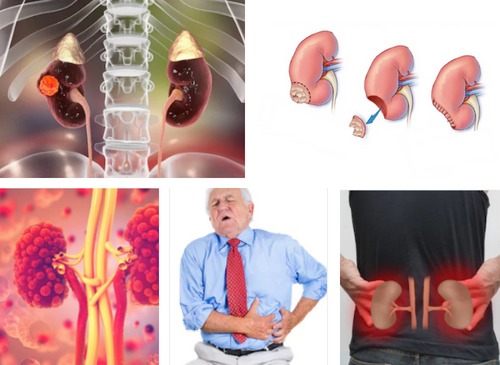The kidneys are located below the ribs, on either side of the spinal column.
The kidney is bean-shaped, and weighs approximately 160 grams (5.6 oz).
Its primary function is to filter blood and eliminate bodily wastes in the form of urine.
There are typically two kidneys, but it is entirely possible to live a normal life with a single kidney.
Therapeutic indications for nephrectomy
Your test results have shown a tumour in the kidney or a disease causing clinical symptoms.
The recommended procedure is nephrectomy.
The purpose of this procedure is to remove part or all of one kidney.
- Partial nephrectomy: the surgeon removes only the diseased part of the kidney while preserving the healthy part.
- Total nephrectomy: the surgeon removes the kidney in its entirety.
In order to preserve kidney function as much as possible, the surgeon will offer partial nephrectomy as the preferred option.
Before surgery, an appointment with an anesthesiologist is necessary.
Nephrectomy step by step
Surgery is performed under general anesthesia.
The operative technique to access the kidney depends on your urologist's surgical practice:
- through an anterior surgical infracostal incision
- through a lateral surgical incision
- by keyhole surgery, with instruments inserted through small holes in the abdomen
- by robot-assisted surgeryRobotic surgery has enabled significant advances in operating technique, for nephrectomy especially, as it provides better operative visibility and greater precision with instruments.
In all cases, a urinary catheter and a drain will be placed at the end of the operation.
The kidney and any other tissues resected during surgery will be sent to a laboratory or to the anatomical pathology department to be analysed.
These analyses allow for careful observation of the tissue samples.
The results will be transmitted to your surgeon within a few days.
Post operative follow-up
In most cases, the recommended surgical procedure is performed without any complications.
Hospital time varies, typically lasting 3 to 5 days.
Analgesics will be prescribed to prevent pain following the surgery.
The urologist will decide when the drain and the urinary catheter should be removed.
The day after the operation, the patient is allowed to get up with supervision by medical staff.
The urologist and patient will decide together when and how to resume normal activities.
As with any surgical procedure, nephrectomy may have some risks and complications related to anaesthesia or to the procedure itself.
Your surgeon will discuss these different questions with you and will give you a written explanatory note in order to obtain your informed consent before the operation.


 en
en 
